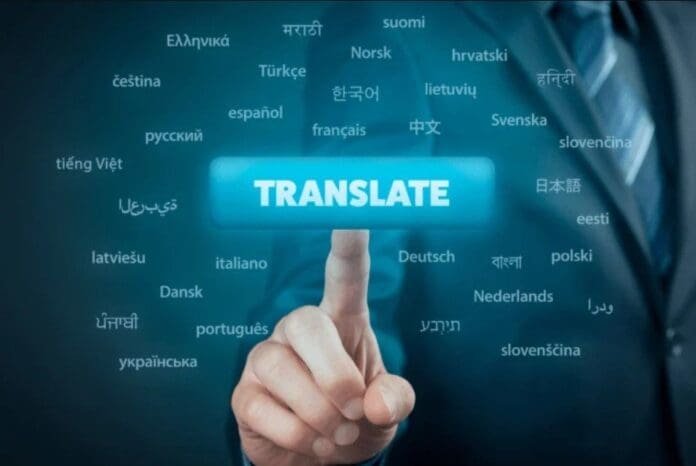Even while translation algorithms have come a long way, are they still unable to handle literary works? The human translators themselves are not persuaded. Translators are the “stage horses of enlightenment,” as poet Alexander Pushkin jotted down in the margin of a draft. Two centuries later, political philosopher Steven Weber drew a parallel between translation and transportation—this time of ideas and information instead of people and products. Similar to how the world transitioned from using horses to using mechanized transportation, the development of AI has allowed for the rapid translation of more complex texts.
There are a number of dangers associated with AI use; thus, speed isn’t necessarily a measure of quality. This week, the European Parliament passed the first comprehensive law governing artificial intelligence (AI). In order to abide by EU copyright legislation, developers must be open and honest about the data that is used for training their models.
On the other hand, next week, the UK parliament will hold a second reading of the AI (Regulation) Bill. Translators of literary works, like other artists, are fighting for their due recognition.
Translation algorithms have come a long way since neural networks were adopted in 2015. Since DeepL translated Ian Goodfellow, Yoshua Bengio, and Aaron Courville’s Deep Learning from English to French in 2018, academic publishers have begun utilizing AI. The book was published by Massot éditions. Trade publishing was quick to follow. Literary translation will be the next level of technological advancement.
Literary translation remains a complex creative process with an array of options. This term or that one? Would you rather have freedom or fidelity? Screen or paper? Database or dictionary? A new issue has arisen with the rise of AI: is it better to translate a text word for word or to first run it via AI translation software?
Because of the growing number of unintelligible translated pirated publications online, it is clear that computers cannot handle this task entirely just yet. Artificial intelligence (AI)-assisted translation has instead been used by publishers. Nuanxed, which uses humans to proofread books that have been machine-translated, collaborates with a few European presses. Their mission is “to maintain the quality of traditional translations” while also providing publishers with cost savings and linguists with “market rates” for their services.
Machines stealing jobs from translators, is a constant worry. According to a recent study by the European Council of Literary Translators’ Associations, experts in the field should either avoid from editing writings created by AI or charge additional fees for the privilege. In this fast-paced information age, transcribing by hand could evolve into the new green travel. This would make sustainable translated books more popular, which should be good for the people who wrote them.
Even some AI advocates admit that the technology could work for a thriller but not a poetry collection when questioned about its quality. The CEO of Lind & Co., a Swedish publishing house, Kristoffer Lind, informed me that machine translation is strictly reserved for thrillers and romantic novels.

While many argue about AI’s viability from an economic perspective, Europa Editions UK and Edizioni E/O publisher Eva Ferri sees it more from an ethical standpoint. She argues that “even when the alternative is much more cost-efficient,” it is always morally correct to hire a human.
On the other hand, Nichola Smalley, who translated fiction from Swedish and Norwegian, had three deadlines. This is despite her assertion, “There’s no point in going faster and faster – that’s not what literature is about.”
However, getting to areas underserved by technology might be challenging at times, especially when you don’t want to slow things down. “I can imagine scenarios where AI helps translate from languages for which there aren’t a lot of translators available,” Ferri explains. Translator Anton Hur of Korean literature notes that the majority of AI systems “will not have enough data on hand” to translate between or into such languages. University of Massachusetts academics are working on a model to try and fix that. “Aid literary translators in sharing more minority voices” is the predicted outcome of this open-source training dataset.
When it comes to technology, how do we envision it changing over time? Translator Tim Gutteridge thinks that computerized translation can be a “reasonable decision” when translating both literary and non-literary works from Spanish. He thinks that it would be even better if the tools had AI capabilities that gave humans more control and choice over the output. Edwin Frank, editorial director of New York Review Books, describes the progress of artificial intelligence as “absolutely inevitable,” which renders the work of human translators “crucial.”
“Any more than I do to the use of screwdrivers.” he argues, “I have no principal opposition to the use of such tools.”
We need every resource at our disposal when translating. There may be a new approach to consult current translations by referring to writings that have been generated by humans and processed by machines. AI has the potential to be another tool that opens up vast linguistic lands to human exploration. Having this option, though, shouldn’t stop us from going at the pace that feels right to us.




